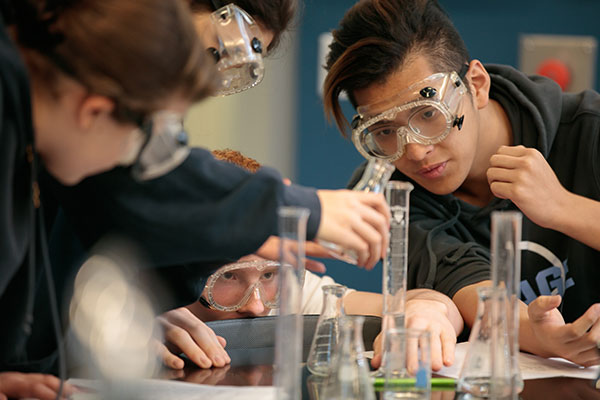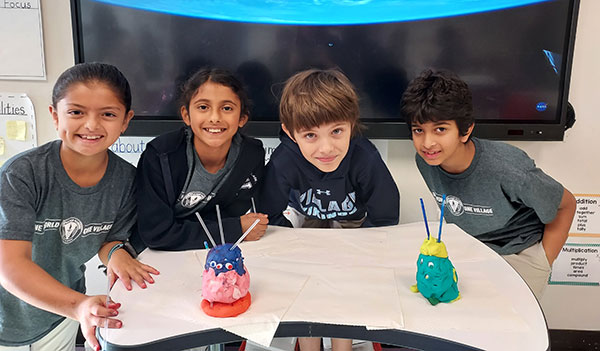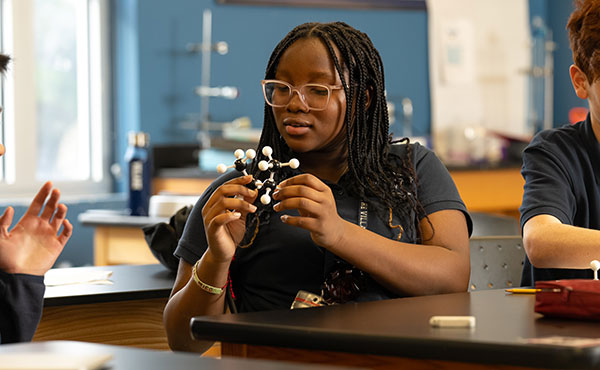Next-Gen: Full STEAM Ahead
Student Competition: The MIT Challenge and The Village School of Houston

Emphasizing the significance of living sustainably, the challenge encourages the adoption of practices and choices that reduce environmental impact and foster a more respectful lifestyle. Images courtesy of Jim Romeo.
Nord Anglia Education, commonly referred to as Nord Anglia, is a British provider of international schools, with headquarters in London, UK. The Village School is a Nord Anglia school in Houston, TX.
Nord Anglia Education has a history of partnering with leading institutions, including MIT, to enhance its students’ exposure to science, technology, engineering, arts and mathematics (STEAM) education. Collaborations with MIT may involve programs, challenges or projects designed to foster innovation, critical thinking and hands-on learning.
MIT has proposed the challenge “Build Better: Plants, Energy, Everything” for the current school year, calling on primary and secondary students to collectively brainstorm innovative ways to construct a more sustainable future. Emphasizing the significance of living sustainably, the challenge encourages the adoption of practices and choices that reduce environmental impact and foster a more respectful lifestyle.
The challenge encompasses a comprehensive exploration of three crucial areas for the betterment of our planet. First, “Build Better Plants” addresses the impact of climate change on global food production. Students will delve into concepts from biology, agriculture and food production to devise more sustainable methods of feeding the growing global population.

Under “Build Better Energy,” students will investigate new sources of clean, renewable energy aimed at reducing dependence on fossil fuels and safeguarding the planet. This includes learning about plasma physics and the latest research on fusion reactors, which emulate the energy-creating process of the sun. Lastly, “Build Better Everything” urges students to reassess everyday objects through an environmentally conscious lens, contemplating the environmental and social implications of manufacturing processes and exploring ways to minimize their impact.
Luke Thurston is the communications manager for The Village School in Houston. We spoke to Luke to understand more about The Village School’s participation in the MIT Challenge. Here is how our conversation went.
Digital Engineering: Can you provide an overview of the MIT Challenge, how it came to be, and the intent of the program? Who will be participating or who has participated? How many participants have you had or are you expecting? Any demographics of participants?
Luke Thurston: The yearly MIT Challenges are set by MIT for all Nord Anglia students around the world, are intended to inspire Nord Anglia students to use active research to meet each challenge so they get thinking about creative solutions to problems. All 82,000+ Nord Anglia students are invited to participate in the MIT Challenges through their schools, and there are options to participate for young primary-aged students all the way up until final-year students who are graduating soon.

DE: What was this year’s challenge all about?
Thurston: MIT designs three challenges based on a theme each year. This year’s theme is “Build Better” where the challenges focus on plants, energy and manufacturing. The challenges form part of the offering from MIT’s collaboration with Nord Anglia as students are also given opportunities to participate in live webinars from MIT staff, conduct their own experiments and ask MIT professors anything they are curious about.
Nord Anglia schools across the world, including The Village School Houston, will take part in the challenges to tackle some of the most pressing issues facing the world today. As one of the top 10 most diverse schools in North America, The Village has a student body from pre-K through 12, comprising children from over 80 countries. The MIT Challenge is incorporated into all grade levels from kindergarten upwards as part of The Village’s rigorous STEAM-focused curriculum.
DE: Can you provide some examples of what the event has produced or what you expect it to produce?
Thurston: Last year’s theme was Alien Life. The Village School Lower School’s students took on the challenge to design and build alien creatures (grade 4) and lunar exploration vehicles (grade 3).
DE: How about this year?
Thurston: This year, Lower School kicked off the MIT Challenge with a classroom planning showcase of the Build Better Plants. The brief and aims for this challenge include:
Design a plant using a variety of materials and explain how it uses the parts you made to get what it needs to grow.
Create a device that can help collect rainwater to be used to water plants when there isn’t rain.
Design a plant that could grow in space and explain what features you used to help it grow.
Build and design a plant that can survive in a specific biome given climate and human environmental changes, and explain the adaptations made, in one hour!
Subscribe to our FREE magazine, FREE email newsletters or both!
About the Author
Jim Romeo is a freelance writer based in Chesapeake, VA. Send e-mail about this article to [email protected].
Follow DE





